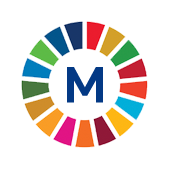 16.2.1 Proportion of children aged 1-17 years who experienced any physical punishment and/or psychological aggression by caregivers in the past month, by education level of interviewed womenMetadataPeriod: Every four yearsYear: 2025 |
 16.2.1 Proportion of children aged 1-17 years who experienced any physical punishment and/or psychological aggression by caregivers in the past month, by education level of interviewed womenMetadataPeriod: Every four yearsYear: 2025 |
| METADATA |
| Indicator information |
| Definition and methodology |
| Data source type and data collection method |
| Notes |
| ID of global indicator |
| Metadata update |
| Global metadata |
| Indicator information | Top |
| Indicator | |
16.2.1 Proportion of children aged 1-17 years who experienced any physical punishment and/or psychological aggression by caregivers in the past month, by education level of interviewed women | |
| Global indicator name | |
16.2.1 Proportion of children aged 1-17 years who experienced any physical punishment and/or psychological aggression by caregivers in the past month | |
| Target | |
16.2 End abuse, exploitation, trafficking and all forms of violence against and torture of children | |
| Goal | |
Goal 16. Promote peaceful and inclusive societies for sustainable development, provide access to justice for all and build effective, accountable and inclusive institutions at all levels | |
| Definition and methodology | Top |
| Definition | |
Percentage of children aged 1 to 14 who in the one month preceding the survey were (at least once) experienced any psychological aggression or punishment, received a minor physical punishment, or were severely physically punished.
Psychological aggression or punishment includes the following: (1) shouting, yelling, or screaming at the child, (2) calling the child a dumb, lazy, or other name like that.
Physical punishment of a child includes the following: (1) shaking the child, (2) spanking, hitting or slapping on the bottom with bare hand, (3) hitting on the bottom or elsewhere on the body with something like a belt, hairbrush, stick or other hard object, (4) hitting or slapping on the face, head or ears, (5) hitting or slapping on the hand, arm or leg and (6) beating up, that is hitting over and over as hard as one could.
Severe physical punishment includes: (1) hitting or slapping on the face, head or ears and (2) beating up, that is hitting over and over as hard as one could. | |
| Methodological explanations | |
Multiple Indicator Cluster Survey (MICS) is a global research programme developed by UNICEF through consultations with other United Nations agencies. MICS is designed to provide statistically sound and internationally comparable data for key social indicators and it is targeted at the most sensitive part of the population: women, children and vulnerable and marginalized population groups. The results of this survey are one of the most important databases, and for many indicators related to health, development and education of children, youth and women, MICS is the only source of data. For more information on Monitoring the Situation of Children and Women and global MICS programme please visit https://mics.unicef.org.
MICS Serbia is a nationally representative sample survey of households, women and children, conducted on the whole territory of Serbia (excluding Kosovo and Metohija). As a separate sample the surveys covered households in Roma settlements. The following instruments are used in the survey: Household Questionnaire, Questionnaire for women aged 15 to 49, Questionnaire for children under five, Questionnaire for recording vaccinations in a health facility and Questionnaire for children aged 5 to 17 years.
MICS publications and survey archives are on https://www.stat.gov.rs/en-US/istrazivanja/mics. Surveys archives contain final reports, databases, programs for indicator calculation, sample information and more.
Observation unit is children aged 1 to 14. The indicator is calculated based on information obtained from the CHILD DISCIPLINE module, from the Questionnaire for children under 5 and Questionnaire for children aged 5-17 years. | |
| Method of calculation | |
Number of children 1-14 years who (at least once) experienced psychological aggression as punishment, experienced minor physical punishment or experienced severe physical punishment is divided by the overall selected and surveyed number of children aged 1-14 years and multiplied by 100.
Observation unit are children aged 1-14 years. The questions refer to the period of one month preceding the survey. | |
| Unit of measure | |
% | |
| Available disaggregation | |
Education Level | |
| Territorial level | |
Regions | |
| Data source type and data collection method | Top |
| Data source | |
Multiple Indicator Cluster Survey (MICS) | |
| Periodicity of data collection | |
Every four years | |
| Notes | Top |
Starting from 1999, the Statistical Office of the Republic of Serbia has not at disposal and may not provide available certain data relative to AP Kosovo and Metohija, and therefore these data are not included in the coverage for the Republic of Serbia (total). | |
| ID of global indicator | Top |
C160201 | |
| Metadata update | Top |
| 30/5/2025 | |
| Global metadata | Top |
https://unstats.un.org/sdgs/metadata/files/Metadata-16-02-01.pdf | |